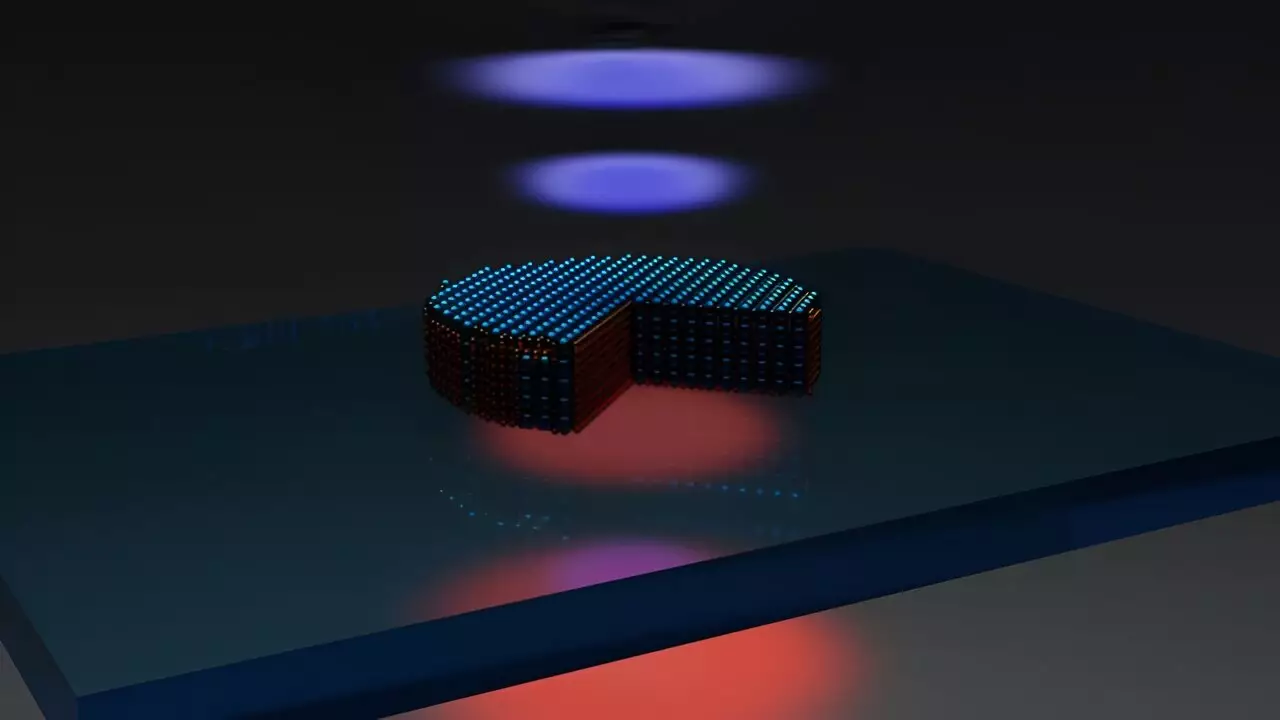Photonic technologies leverage the unique interactions between light and matter to harness extraordinary phenomena that have cemented their roles in diverse fields, from telecommunications to medical diagnostics and spectroscopy. The ongoing exploration of these interactions often leads to significant technological advancements. Recently, researchers from the Department of Physics at Chalmers University of Technology have made a notable leap in this area by successfully integrating nonlinear optics with high-index nanophotonics into a compact disk-like structure. This article delves into the groundbreaking implications of their findings, as documented in Nature Photonics.
The researchers, led by Dr. Georgii Zograf, have developed a nanodisk that significantly enhances light frequency conversion capabilities. This disk is not only smaller than the wavelength of visible light but also boasts a conversion efficiency that is 10,000 times greater than that of similarly composed unstructured materials. Such an achievement emphasizes the transformative potential of nano-structuring in enhancing performance and functionality within photonics.
Central to their innovation is the integration of material and optical resonances that utilize the nonlinear properties of a crystal. Specifically, the researchers utilized molybdenum disulfide (MoS2), a transition metal dichalcogenide (TMD) known for its remarkable optical qualities at room temperature. The challenge in utilizing this material has historically been its tendency to lose essential nonlinear properties when stacked, primarily due to constraints related to its crystal structure.
In a pioneering effort, Zograf and his team fabricated a nanodisk constructed from stacked molybdenum disulfide in a manner that successfully preserved the material’s broken inverse symmetry—the key to maintaining its nonlinear optical characteristics. Consequently, each layer within this novel nanodisk retains its nonlinear effects, leading to a compound enhancement of these properties.
One significant advantage of TMDs is their high refractive index, estimated at 4.5 within the visible spectrum, enabling a greater compaction of light in this medium. Furthermore, this breakthrough nanodisk can be transferred onto various substrates without necessitating lattice matching, simplifying its application in optical devices.
A captivating feature of the nanodisk technology arises from its efficiency in localizing electromagnetic fields and facilitating second-harmonic generation—the process of doubling the frequency of light. This phenomenon is particularly vital for nonlinear optical applications, which are heavily used in advanced laser technologies.
Unlike conventional platforms that often measure in centimeters, the scale of the developed nanodisk is a mere 50 nanometers, marking a leap in miniaturization that could redefine existing paradigms of photonic applications. According to Professor Timur Shegai, research leader, the development signifies a critical milestone in the realm of nanoscale photonics.
The researchers are optimistic that their findings will catalyze further innovations in the field of photonics. The compact nature of TMD materials, coupled with their unique properties, presents ripe opportunities for integration into optical circuits and miniaturized photonic devices. The potential implications stretch to various applications, including advancements in both quantum and classical nonlinear optics.
By effectively nano-structuring such materials, researchers anticipate significant reductions in the dimensions of optical devices and improvements in their efficiencies. Notably, the designs may enable the generation of entangled photon pairs and additional nonlinear optical phenomena, paving the way for unprecedented experiments in nanoscale photonics.
While the advancement symbolized by the disc-like nanostructure may appear as an initial step, it marks a critical juncture in the evolution of photonics. As researchers continue to explore the capabilities of TMDs and their integration into optical systems, the path forward seems promising. In the coming years, we may witness a transformation in the photonic landscape fueled by such innovations, producing devices that are more efficient, compact, and versatile than ever before.
The work conducted by the team at Chalmers University of Technology is a testament to the potential that lies within interdisciplinary research and the application of advanced materials to propel photonic technology into new realms. Indeed, the journey has just begun, and the horizon of photonics is expanding rapidly.

